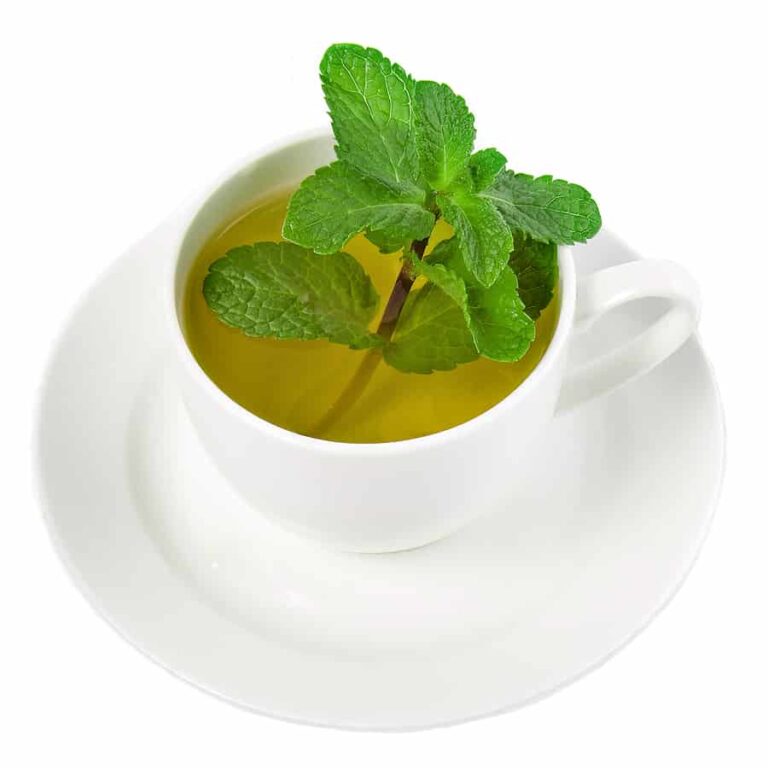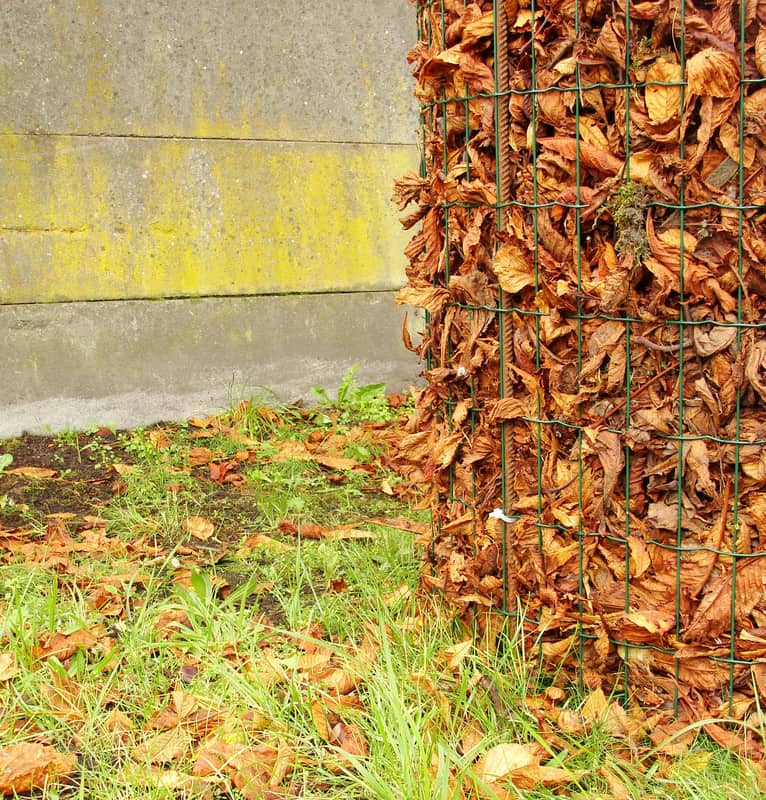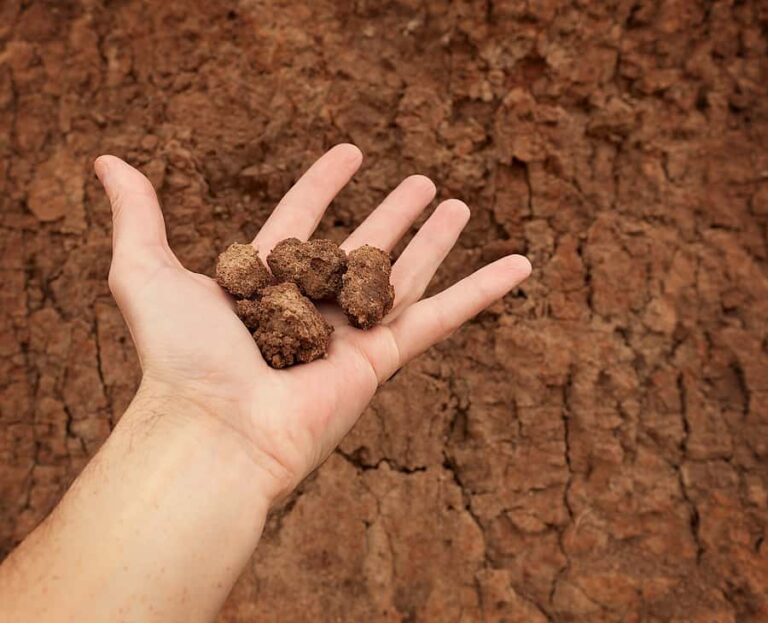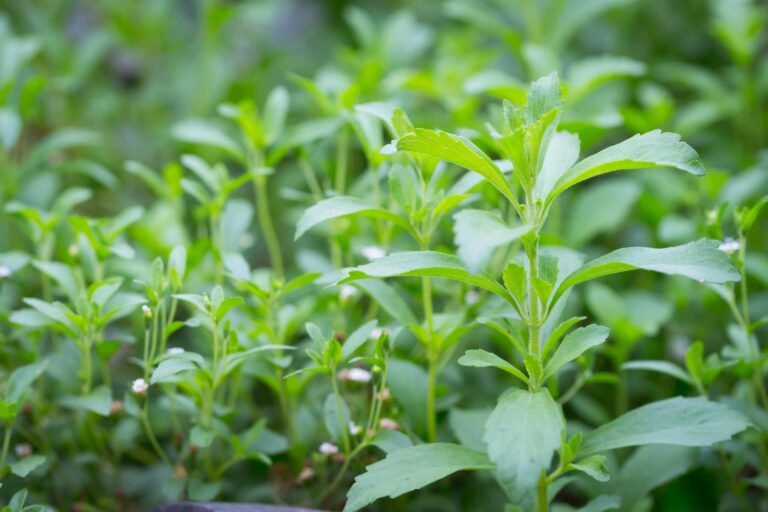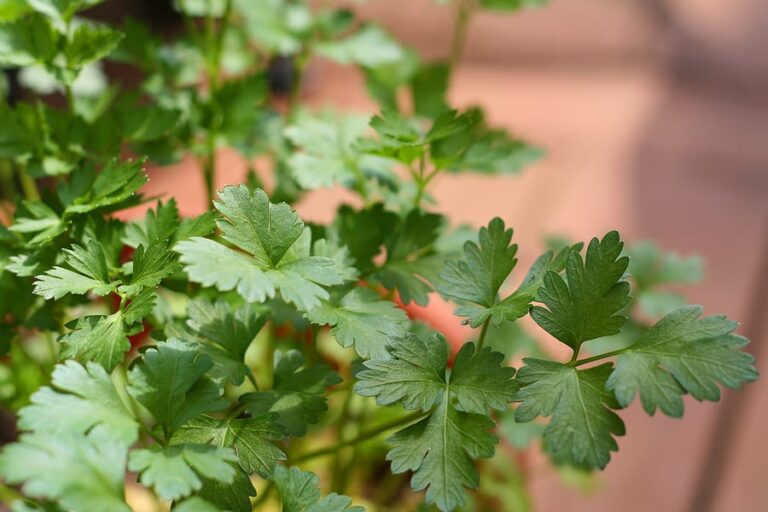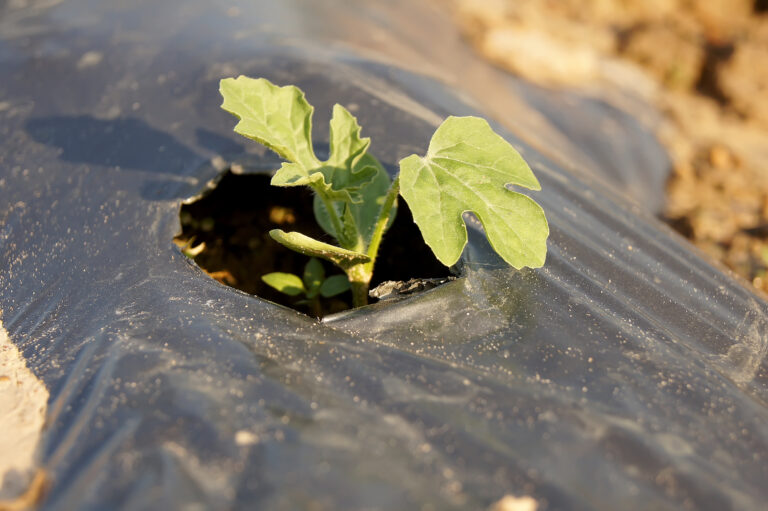How to Start an Herb Garden
Herbs are both beautiful and useful. They require a small amount of effort for a great reward.
An herb garden is easy to start; you can grow herbs in their own stand-alone bed, include them in existing flower and vegetable beds, or grow them in decorative pots. Herbs are highly adaptable they will grow in the garden, on a balcony or patio, and even indoors. An herb garden can be very small or as large as space allows.
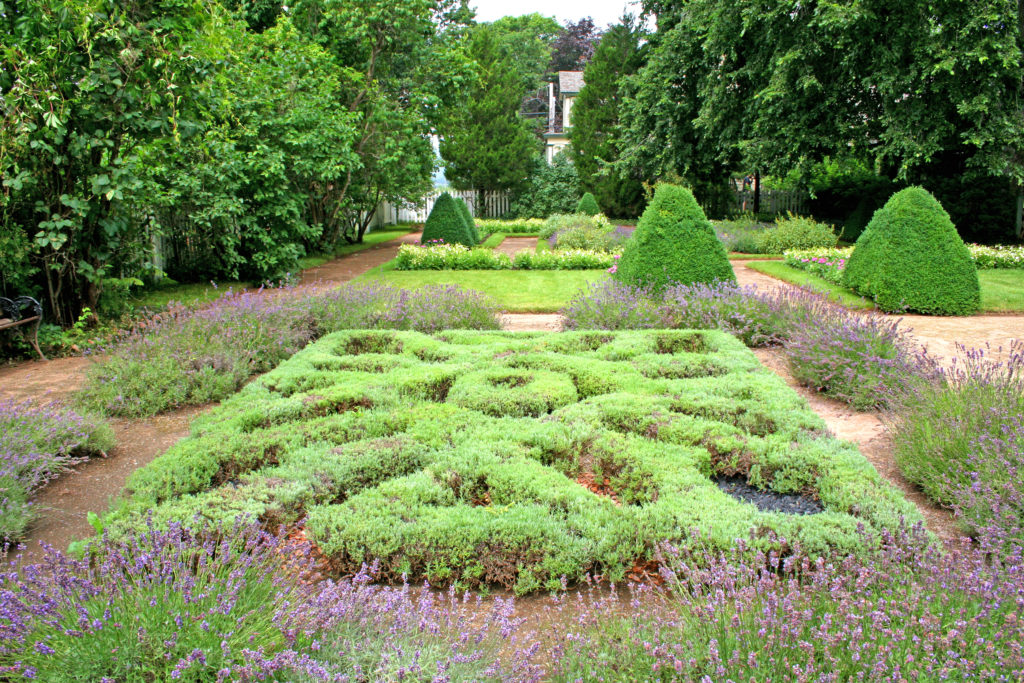
Herbs for cooking are especially rewarding; they offer great fresh flavor at very little expense. In a small space, you can grow “potherbs” for bulk use in cooking pots, “salad herbs” for raw seasoning, and “sweet herbs” for flavorings.
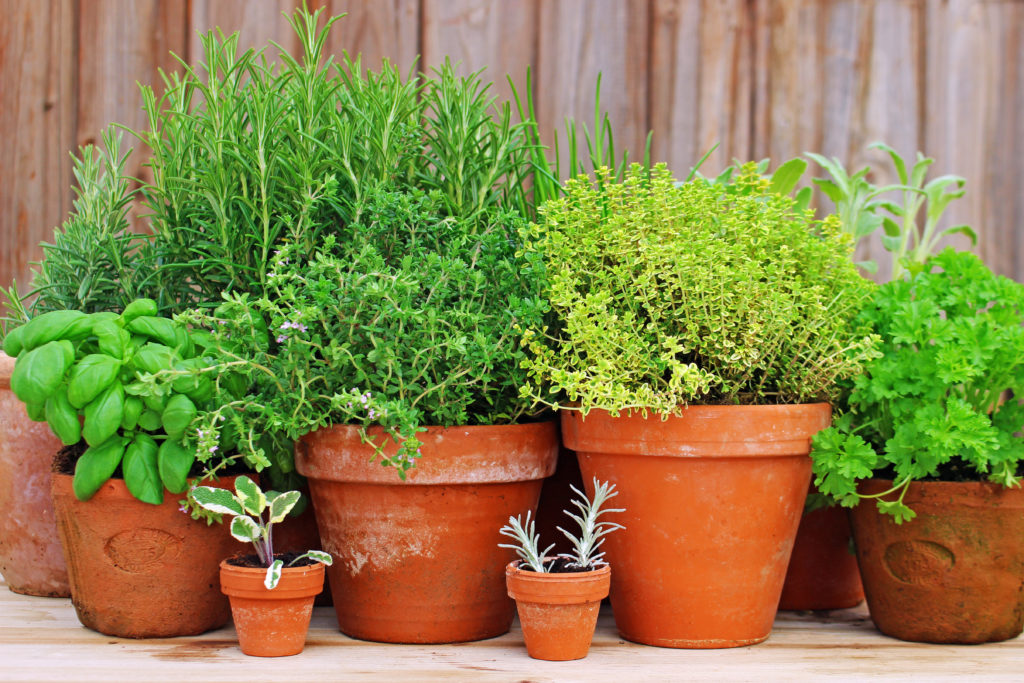
Beginner’s guide to herb gardening
Here is a simple checklist to help you start an herb garden:
Time and planning
Time and effort. Herb gardening should be a pleasure, not a chore. Consider how much time and effort you want to put into your herb garden. Don’t be too ambitious to start. Start with a small area or one or two large containers and a few herbs—the ones you think you are most likely to use in the kitchen.
Plan before you plant. Draw a sketch of your garden before you plant. Use grid paper letting each grid represent a 6-inch or 1-foot square. Mark in paths. Be sure your herbs are easily accessible from paths and never more than arm’s length away, about 2 feet 6 inches to the center of the planting bed. You can plant herbs in straight rows or whimsical curvilinear ribbons; you can plant herbs alongside colorful annual flowers or perennials in existing flower beds.
Location
Sunny location
The ideal site for an herb garden is a sunny spot with protection from prevailing breezes. Most aromatic herbs are Mediterranean in origin, so a site with 6 to 8 hours of sun is best.
Close to the kitchen
A location close to the kitchen door will make it convenient for picking herbs just as they are needed. A quiet location will make your herb garden a peaceful spot to get away from a hectic day.
Soil
Well-drained, nutrient-rich soil
Herbs grow best in soil that is rich in organic matter and well-drained. Puddles of water should not remain after rain. Add compost and well-rotted manure to the planting bed; this will ensure the soil is rich in nutrients as well as loose and well-draining. Use potting soil for containers. If you are planting in soil that you suspect may not be nutrient-rich, add a granular 10-10-10 organic fertilizer across the bed.
Herbs that want dry soil
Many herbs need dry soil to produce their most fragrant or flavorful foliage. Herbs that like dry soil include anise, bee balm, borage, burnet, caraway, catnip, horehound, hyssop, lavender, lavender cotton, perilla, tarragon, thyme, and yarrow.
Herbs that will grow in damp, well-drained soil
If you live where rain comes often, there are herbs that will grow in damp soil as long as it is well-drained. These herbs include angelica, calendula, chervil, chives, clary, cilantro, dill, garlic, horseradish, lemon balms, lemon verbena, mint, pennyroyal, rue, saffron, savory, sweet flag, sweet woodruff, tansy, valerian, and watercress.
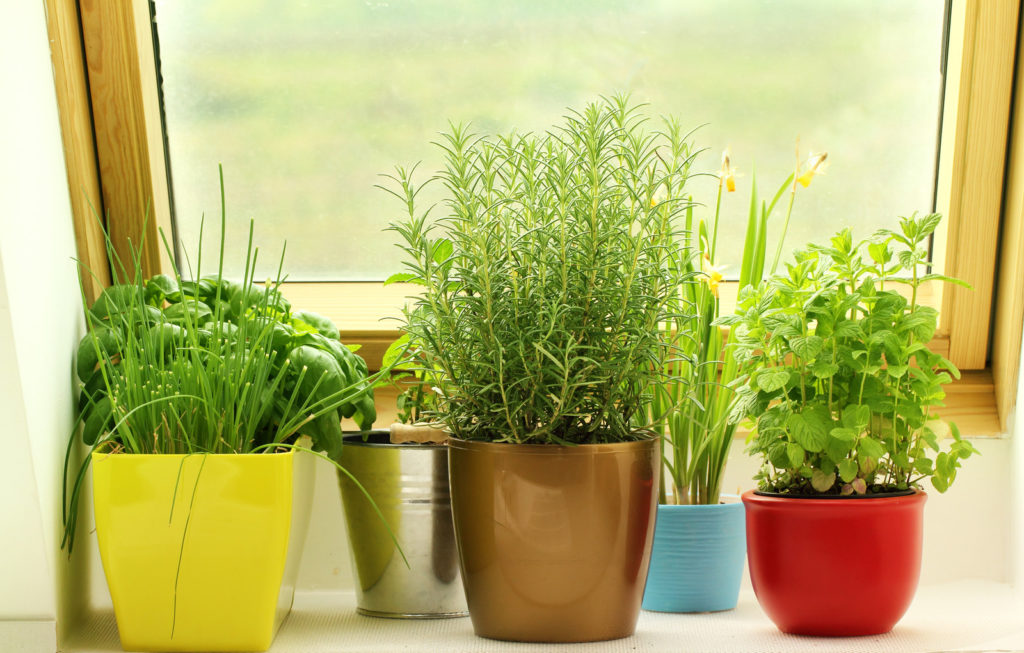
The life of herbs
There are annual, biennial, and perennial herbs. An annual herb flowers, sets seeds, and dies all in one year. A biennial flowers, sets seed, and dies over two years. A perennial lives from year to year–commonly 5 years or more, usually flowering and setting seed in spring and summer, dying to the ground in winter, and regrowing the following year.
Annual and biennial herbs
Annual herbs live for one growing season. They must be replanted from seed or transplanted year after year. Plant annual herbs such as basil and chives where they can be easily replaced each year. Biennial herbs will flower during the second year and then die; they must be replaced every other year.
Common annual herbs include anise, basil, calendula, German chamomile, chervil, cilantro, dill, summer savory, and watercress. Biennial herbs include angelica, caraway, clary, fennel, lemongrass, lemon verbena, parsley, and pennyroyal. If you live in a warm winter region, you may find herbs listed as annuals or biennials live more than one season; these are hardy annuals.
Hardy annuals are annual herbs that can withstand frost and so can be planted outdoors in early spring or even in fall and overwintered. Hardy annuals include anise, borage, calendula, German chamomile, chervil, cilantro, dill, garlic, American pennyroyal, and summer savory.
Tender annuals are easily injured by frost so they must be protected from chilly weather (they are often grown indoors). Tender annuals include basil, cumin, perilla, safflower, and sesame.
Perennial herbs
Plant perennial herbs such as rosemary and sage where they have room to grow for several years to come. One plant of each perennial or evergreen herb is enough for most family gardens. Common perennial herbs include anise hyssop, artemisia, bee balm, burnet, catnip, Roman chamomile, chives, comfrey, costmary, fennel, germander, ginseng, horehound, horseradish, hyssop, lavender, lavender cotton, lemon balm, lemongrass, lovage, marjoram, mints, oregano, pennyroyal, rosemary, rue, saffron, sage, scented geraniums, sweet cicely, sweet flag, sweet woodruff, tansy, tarragon, thyme, valerian winter savory, and yarrow. Some perennials listed here are not winter hardy in cold climates and so they must be grown as annuals.
Some herbs must have cold winters to grow well. Freezing temperatures will help these herbs grow — lovage, English lavender, hyssop, sweet cicely, silver artemisia, tarragon, and yarrow.
Culinary herbs
Here are a few herbs that cooks consider essential: parsley and chives for flavorful garnishes, sweet marjoram for flavoring, basils for both sweet and spicy flavorings, tarragon for its delicate and distinctive flavor, Florence fennel for its sweet swollen stems, sages for their many flavorful uses, dill for flavoring, coriander for its seeds and leaves, and thymes for a variety of flavors.
Preparing to plant
Choose herbs for your area. For the greatest success, plant herbs that are adapted to your area—adapted to your garden’s soil, range of temperature, and rainfall. Visit a local garden center or talk to friends who grow herbs to find out which herbs grow best in your region.
Prepare for planting. Herbs grow best in well-drained soil rich in organic matter. Turn the soil with a spade or garden fork to a depth of 12 to 18 inches then add aged compost to your planting beds. Rake the bed smooth before sowing seeds or setting out transplants.
Seeds and transplants
Sowing seeds
Some herbs can be easily started from seed; others must be set out as seedlings. (Herb seedlings are often started by commercial growers who can propagate seed or cuttings under ideal growing conditions.) You can start your own seed in a small container filled with moist seed starting mix. If possible germinate herb seeds indoors under grow lights shining 12 hours a day. Keep the soil moist until the seeds germinate. When seedlings have formed their first true leaves and grown to 4 inches tall they can be transplanted into the garden or containers. Don’t set young plants outdoors until two or three weeks after the last frost.
Setting out transplants
When transplanting herb seedlings into the garden dig a hole slightly larger than the transplant’s rootball and make sure to set the plant even with the soil surface–not deeper. Fill and lightly tamp the soil, and water well. Be sure to protect young seedlings from direct sunlight and wind for the first week to 10 days.
Herb seeds can be started in the garden, but it’s important to wait until the soil and air temperatures average about 70 degrees F. Nearly all herb seeds need warm temperatures to germinate and grow from seedlings to maturity.
Shape and size of an herb garden
An herb garden can take any shape–square, circular, rectangular, oval, kidney-shaped, or free-formed. Traditional herb gardens are usually symmetrical, but herbs lend themselves to informal beds. Herbs can be planted along the sides of buildings or along fences. They can be planted as edgings along walkways. The size of an herb garden depends on how much time you have to take care of it. If you are a beginner, start small; you can always add to it later. You can grow many herbs in a 3 to 4-foot square planting bed.
No room for an herb garden
If you don’t have room for a dedicated herb garden, you can mix herbs in flower beds and borders and integrate them into the vegetable garden. You can grow herbs in pots, or use them as edgings and borders.
Herbs in containers
Many herbs are easily grown in containers. Herbs for containers include anise, basil, chervil, coriander, lavender, lavender cotton, lemon balm, parsley, rosemary, sage, scented geraniums, and summer savory. At the edge of a container, you can plant creeping varieties such as chamomile or thyme which can cascade over the sides.
Containers can be placed wherever the sun/shade conditions are right for the herbs you want to grow. Make sure you place containers within reach of the garden hose. Container herb gardens can be grown on patios, porches, decks, balconies, rooftops, and along walkways.
Choose a container that fits the spot. Wooden tubs, redwood, or pressure-treated pine planters can be used. Plastic pots are durable and retain moisture longer than clay pots. Metal containers can get hot if placed in the sun.
Herbs among vegetables
Many herbs grow well as companions to vegetables. Herbs such as artemisia, calendula, chives, and thyme will repel insects that attack vegetables. Chives and parsley can be grown as decorative edgings in a vegetable garden. Be sure to choose herbs that can tolerate fertilizer and water since vegetables need regular feeding and water. Good herb/vegetable companions are summer savory and asparagus, tomatoes and basil, cucumbers and dill, peppers and marigolds, summer squash and nasturtiums, and lettuce and onions and chives.
Herbs for partially shaded areas.
If you don’t have a spot that gets eight hours of sunlight each day, there are herbs that can be grown in partial shade. Herbs that will grow in partial shade include angelica, anise hyssop, bee balm, borage, calendula, catnip, chamomile, chervil, chives, costmary, germander, horseradish, hyssop, lemon balm, lovage, parsley, pennyroyal, perilla, rosemary, saffron, sage, sweet flag, sweet woodruff, tarragon, and valerian. Mint is best grown in full sun but will survive in partial shade. Herbs that will tolerate heavy shade are chervil, ginseng, sweet cicely, sweet woodruff, and watercress.
Supplies to get started
Supplies you will need to start an herb garden. To get your herb garden growing you will need a spade, garden fork, and tine rake to prepare and turn the soil; seeds, small containers, potting soil, fluorescent light for indoor seed starting, spray bottle to keep seed starting soil moist, and a garden hose.
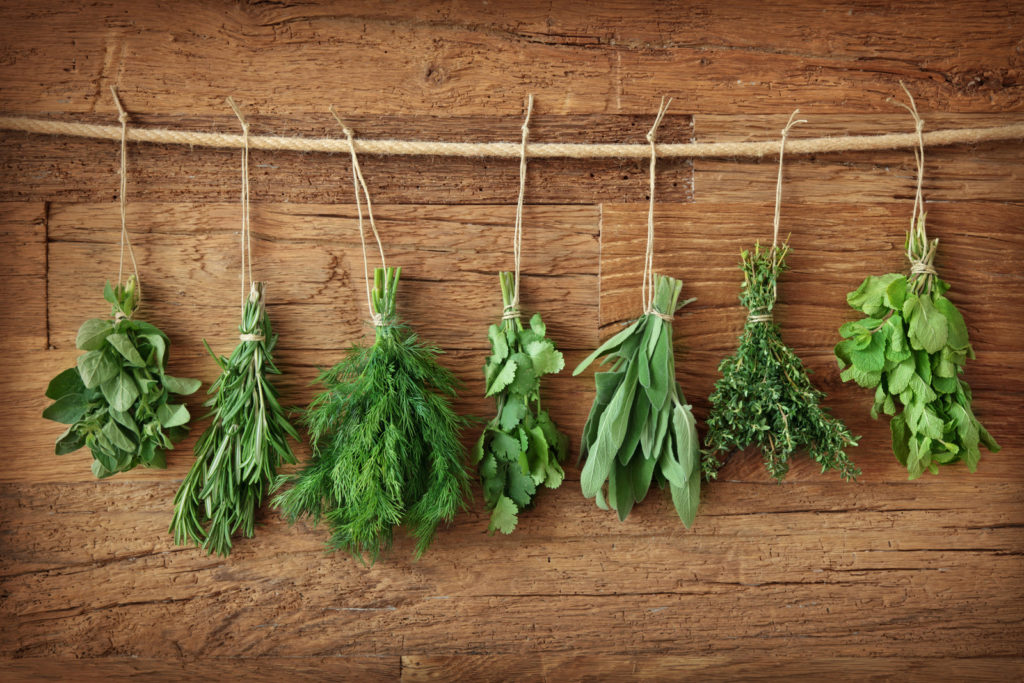
Herbs to grow–a starter list
- How to Grow Basil
- How to Grow Borage
- How to Grow Chives
- How to Grow Cilantro
- How to Grow Dill
- How to Grow Fennel
- How to Grow Lemon balm
- How to Grow Marjoram
- How to Grow Mint
- All About Parsley
- How to Grow Sage
- How to Grow Savory
- How to Grow Tarragon
- How to Grow Thyme
- How to Grow Anise
- How to Grow Caraway
- How to Dry Herbs
- Lemon Herbs to Grow and Cook
- Bees and Herbs
Herb garden frequently asked questions
Q: What annual herbs would you suggest for a beginner to grow?
A: The easiest herbs to grow from seed are basil, borage, chervil, dill, parsley (a biennial grown as an annual), summer savory, and sweet marjoram.
Q: What perennial herbs are a good choice for a beginner to grow?
A: Try chives, French tarragon, peppermint, rosemary, sage, spearmint, and thyme. Rosemary is easy to grow but will not survive outdoors where winters are below freezing.
Q: What are the most fragrant herbs?
A: Many herbs are fragrant. You can grow angelica, catnip, costmary, horehound, hyssop, lavender, lavender cotton, lemon balm, lemongrass, lemon verbena, lovage, marjoram, mints, rosemary, sage (especially pineapple sage) scented geraniums, sweet flag, thyme, valerian, and wormwood,
Q: Which herbs are commonly grown for culinary use?
A: The most common culinary herbs are basil, borage (young leaves), burnet, chervil, chives, dill, fennel, lemon balm, lemongrass, marjoram, mints, oregano, parsley, sage, savory, tarragon, and thyme.
Q: What herbs can I use to make herbal teas?
A: Teas can be made from bee balm, calendula, chamomile, scented geraniums, ginseng, horehound, lemon balm, lemongrass, mints, sage, and sweet cicely.
Q: Which herbs attract bees?
A: Herbs that will attract bees to the garden include bee balm, borage, hyssop, lavender, lemon balm, lovage, marjoram, sweet cicely, and thyme.
Q: What herbs can I grow indoors?
A: Herbs can be grown indoors in a sunny window or under gardening lights. Herbs that grow well indoors include basil, chives, marjoram, parsley, rosemary, and scented geraniums..
Related articles:
Best Herbs for Container Growing
Planning the Home Fruit Garden
Garden Planning Books at Amazon:
- Vegetable Garden Almanac & Planner
- Kitchen Garden Grower’s Guide Vegetable Encyclopedia
- Vegetable Garden Grower’s Guide
- Tomato Grower’s Answer Book


